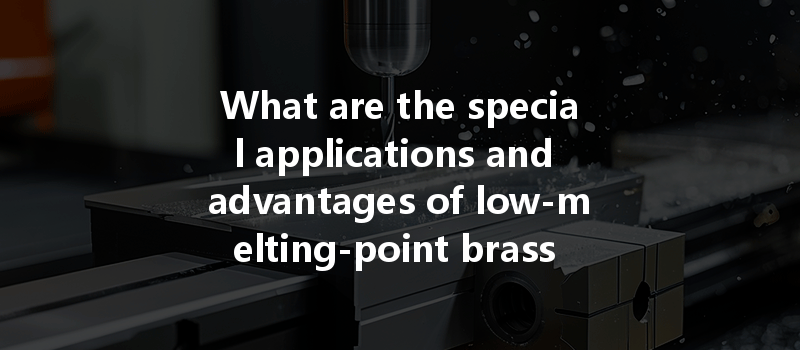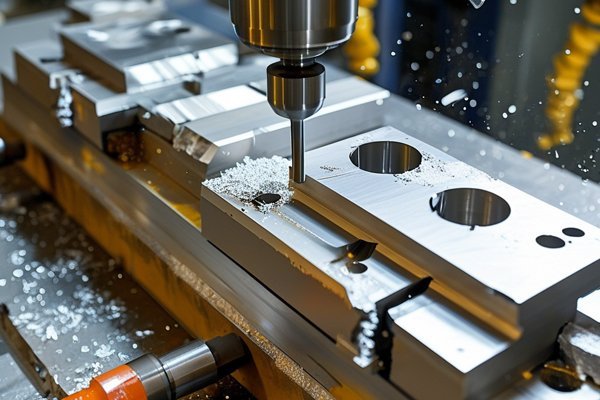Opening
Did you know that brass is one of the earliest alloys known to humanity, with usage dating back over 2,500 years? While its historical relevance is fascinating, the modern-day applications of brass, especially low-melting-point variations, are equally compelling. These remarkable materials have found their place in CNC machining due to their unique properties, making them ideal for various applications. In this blog, we delve deep into the special applications and advantages of low-melting-point brass in CNC machining processes, exploring why these materials are essential in contemporary manufacturing environments.
—
Understanding Low-Melting-Point Brass
Low-melting-point brass typically includes alloys with a zinc content that allows them to melt at lower temperatures (around 900°C to 950°C compared to conventional brasses). This characteristic makes them easier to process, especially in complex machining applications where other metals may prove difficult to form. The unique composition of low-melting-point brass involves varying ratios of copper and zinc, which offers versatility in performance and quality.
Composition and Properties
Brass alloys consist primarily of copper and zinc, with low-melting-point (LMP) brass characterized by its favorable melting range. The addition of other elements, such as lead or tin, further enhances machinability and physical properties:
These properties make LMP brass a go-to material for applications requiring resilience, corrosion resistance, and ease of shaping.
—
Special Applications of Low-Melting-Point Brass in CNC Machining
Given its unique properties, low-melting-point brass is utilized across various industries in numerous applications. Some of the most common include:
Low-melting-point brass is prevalent in the manufacturing of electrical connectors and terminals. The excellent conductivity of copper combined with the advantageous melting point allows for efficient fabrication processes and high-performance connections. Additionally, these components are crucial for automotive and consumer electronics, where reliability and efficiency are paramount.
The corrosion resistance and malleability of low-melting-point brass make it an ideal choice for plumbing fixtures, valves, and fittings. This application capitalizes on both the low melting behavior during the manufacturing process and the material’s ability to withstand harsh environments.
In the medical industry, precision is vital. Low-melting-point brass can be employed in various components, from surgical instruments to diagnostic devices. The malleability of the material allows for the creation of intricate shapes required for complex functionalities in medical equipment.
Architectural applications also benefit from low-melting-point brass. Hardware such as locks, knobs, and various decorative fixtures often utilize this material for its aesthetic appeal and durability. The relative ease of machining allows for intricate designs that add value to architectural projects.
Surprisingly, low-melting-point brass is also found in musical instruments, particularly in brass instruments like trumpets and saxophones. The unique acoustic properties of brass, coupled with its workability, make it favorable for crafting resonant and durable instruments.

—
Advantages of Low-Melting-Point Brass in CNC Machining
The lower melting point means that LMP brass can be machined at lower temperatures, reducing wear and tear on tooling. This not only extends the lifespan of cutting tools but also allows for faster production rates, significantly improving the efficiency of manufacturing processes.
Due to the properties of low-melting-point brass, manufacturers may rely less on additional steps like heat treatment, lowering production costs. Cheaper processing costs combined with reduced tool wear lead to substantial savings without sacrificing quality.
The wide range of application possibilities demonstrates the versatility of low-melting-point brass. Whether in automotive, medical, or even artistic endeavors, the adaptability of this material helps meet a variety of design and functional requirements.
Low-melting-point brass exhibits strong resistance to corrosion, particularly beneficial in industries like plumbing and marine applications. The longevity of products made from this material translates into reduced maintenance costs and increased customer satisfaction.
With growing emphasis on environmentally friendly manufacturing, low-melting-point brass supports sustainable practices. As a material that often incorporates recycled components, it aligns well with green manufacturing goals while minimizing energy consumption during CNC machining processes.
—
Challenges and Considerations
Despite its numerous advantages, using low-melting-point brass in CNC machining isn’t without challenges:
Choosing the right alloy composition is crucial, as different ratios of copper, zinc, and other elements can affect performance, machinability, and final product quality. Manufacturers must evaluate the specific requirements of their applications before selecting a low-melting-point brass variant.
While LMP brass can be machined at lower temperatures, precise thermal control during the machining process remains vital. Inadequate thermal management can lead to issues such as warping or dimensional inaccuracy.
Although LMP brass is easier on machine tools, it can still exhibit wear over time. Regular maintenance and proper selection of cutting tools will extend the life of machinery and ensure high-quality output.
—
Low-melting-point brass materials embody a unique and valuable resource in CNC machining processes. Their special applications range from electrical components to architectural hardware, demonstrating versatility across various industries. The advantages of ease of machining, cost-effectiveness, enhanced corrosion resistance, and sustainability make LMP brass a preferred choice among manufacturers.
As the industry continues to evolve, understanding the properties and potential of materials like low-melting-point brass is essential for engineers and manufacturers alike. This blog serves as a reminder of the innovative technologies and materials available for modern manufacturing practices. By considering these insights, businesses can improve production efficiency, ensure product reliability, and contribute positively to sustainability goals.
—






